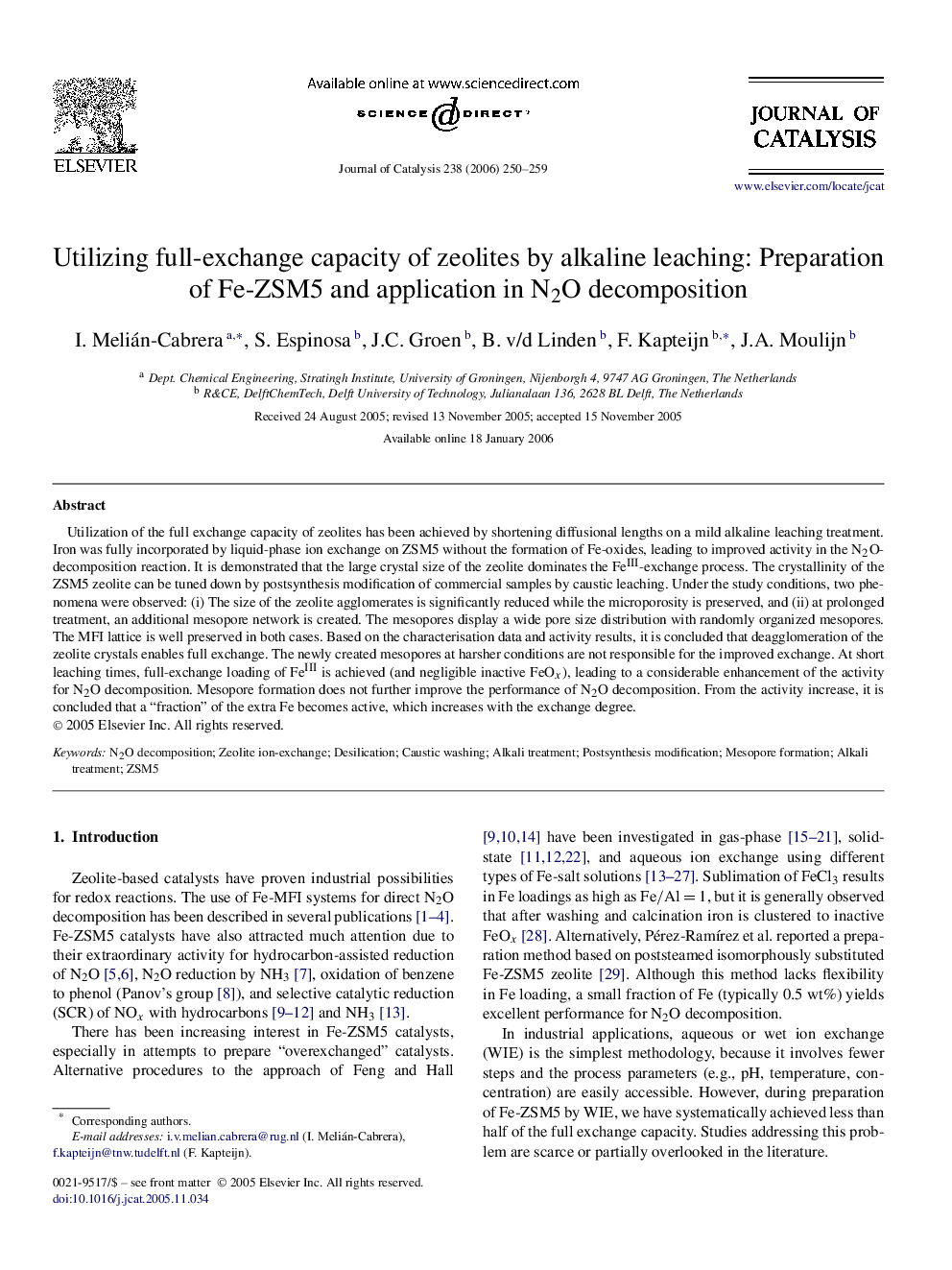| Article ID | Journal | Published Year | Pages | File Type |
|---|---|---|---|---|
| 63212 | Journal of Catalysis | 2006 | 10 Pages |
Utilization of the full exchange capacity of zeolites has been achieved by shortening diffusional lengths on a mild alkaline leaching treatment. Iron was fully incorporated by liquid-phase ion exchange on ZSM5 without the formation of Fe-oxides, leading to improved activity in the N2O-decomposition reaction. It is demonstrated that the large crystal size of the zeolite dominates the FeIII-exchange process. The crystallinity of the ZSM5 zeolite can be tuned down by postsynthesis modification of commercial samples by caustic leaching. Under the study conditions, two phenomena were observed: (i) The size of the zeolite agglomerates is significantly reduced while the microporosity is preserved, and (ii) at prolonged treatment, an additional mesopore network is created. The mesopores display a wide pore size distribution with randomly organized mesopores. The MFI lattice is well preserved in both cases. Based on the characterisation data and activity results, it is concluded that deagglomeration of the zeolite crystals enables full exchange. The newly created mesopores at harsher conditions are not responsible for the improved exchange. At short leaching times, full-exchange loading of FeIII is achieved (and negligible inactive FeOx), leading to a considerable enhancement of the activity for N2O decomposition. Mesopore formation does not further improve the performance of N2O decomposition. From the activity increase, it is concluded that a “fraction” of the extra Fe becomes active, which increases with the exchange degree.
